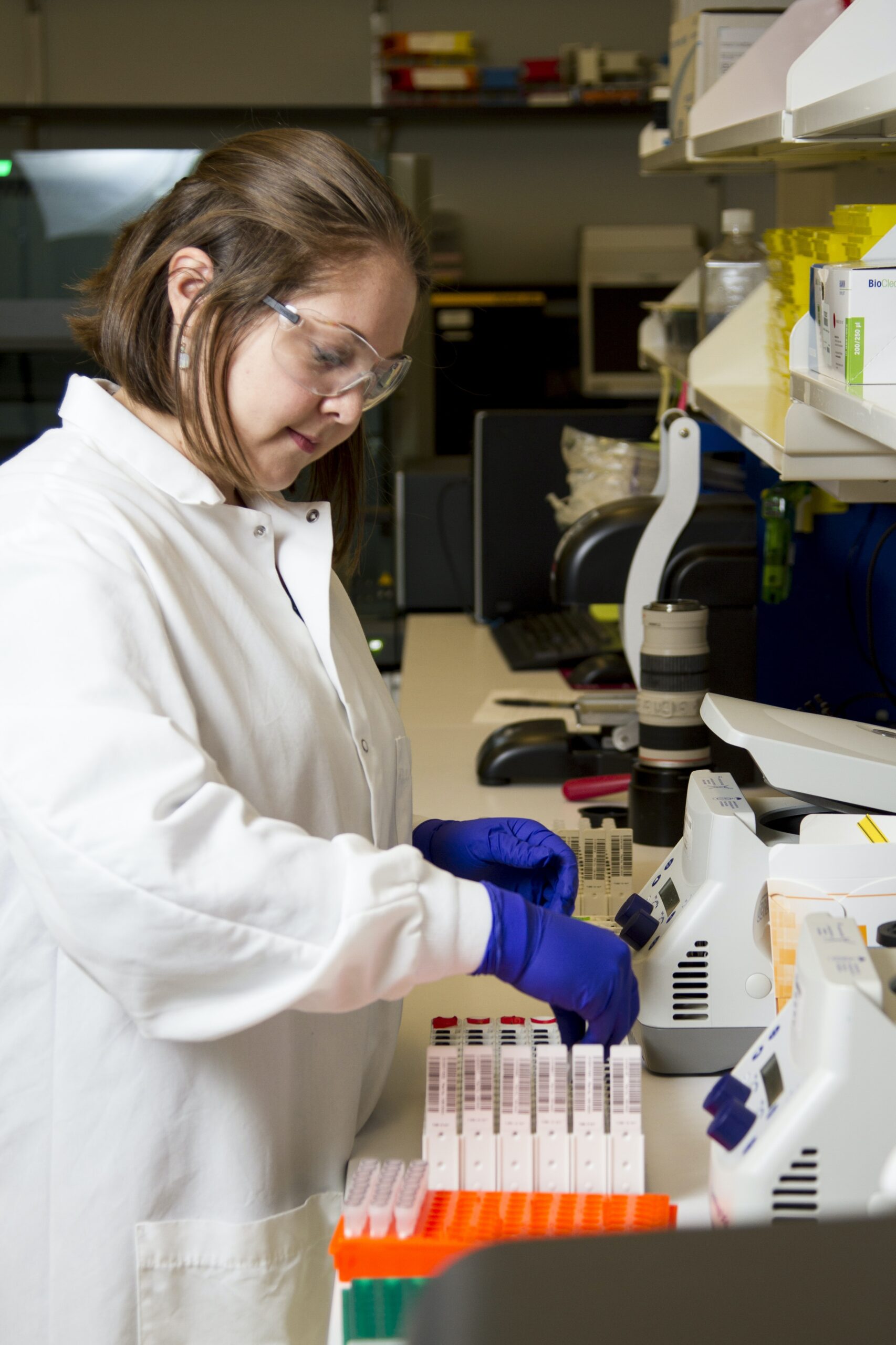Did you know that having a swollen prostate could potentially increase the risk of developing prostate cancer? Prostate enlargement, also known as benign prostatic hyperplasia, is a common condition that affects many men as they age. While an enlarged prostate itself doesn't necessarily lead to cancer, it can cause bothersome urinary symptoms that may prompt further investigation. In this article, we will explore the relationship between an enlarged prostate and prostate cancer, shedding light on the importance of early detection and regular screenings. So, if you've ever wondered whether a swollen prostate could lead to cancer, keep on reading to find out more.

Understanding the Prostate Gland
What is the prostate?
The prostate gland is a small, walnut-shaped organ that is part of the male reproductive system. It is located just below the bladder and surrounds the urethra, which is the tube that carries urine from the bladder out of the body. The prostate gland produces a fluid that nourishes and protects sperm, helping them to survive and function properly.
Functions of the prostate gland
The prostate gland plays a crucial role in male reproductive health. Its main function is to produce prostate-specific antigen (PSA), an enzyme that liquefies semen after ejaculation, allowing sperm to swim freely. The fluid produced by the prostate gland also acts as a medium for transporting and protecting sperm during ejaculation.
Position and structure of the prostate
As mentioned earlier, the prostate gland is located just below the bladder and surrounds the urethra. It is approximately the size of a walnut, but its size can vary slightly among individuals. The prostate is made up of several lobes and is covered by a capsule of connective tissue. Understanding the position and structure of the prostate is important when diagnosing and treating prostate-related conditions.
Common Prostate Conditions
Prostatitis
Prostatitis is the inflammation of the prostate gland, often caused by an infection. This condition can be acute or chronic and may result in symptoms such as pain or discomfort in the pelvic area, frequent urination, and difficulty in passing urine. Prostatitis can be treated with antibiotics and other medications to reduce inflammation and relieve symptoms.
Benign Prostatic Hyperplasia (BPH)
Benign Prostatic Hyperplasia, also known as BPH, is a non-cancerous enlargement of the prostate gland. It is a common condition among older men and typically results in urinary symptoms such as frequent urination, weak urine flow, and the need to urinate at night. Treatment options for BPH may include medication to shrink the prostate or surgery to remove excess prostate tissue.
Prostate cancer
Prostate cancer is the most common cancer among men. It occurs when malignant cells develop in the prostate gland and can grow and spread to other parts of the body if left untreated. Symptoms of prostate cancer may include difficulty in urination, blood in the urine or semen, erectile dysfunction, and pain in the pelvic area. Early detection through regular screenings and timely treatment are crucial in managing prostate cancer.
Understanding Prostate Swelling
Symptoms of a swollen prostate
A swollen prostate, also known as prostate enlargement or benign prostatic hyperplasia (BPH), can cause a variety of symptoms. These may include frequent urination, a weaker urine stream, difficulty initiating or stopping urination, a feeling of incomplete bladder emptying, and urinary tract infections. It is important to be aware of these symptoms in order to seek proper medical attention and diagnosis.
Causes of prostate enlargement
The exact cause of prostate enlargement is not fully understood, but it is believed to be primarily related to hormonal changes that occur as men age. Specifically, the hormone dihydrotestosterone (DHT) has been implicated in the growth of prostate tissue. Other factors that may contribute to prostate enlargement include genetics, inflammation, and the influence of other hormones.
Complications from a swollen prostate
While a swollen prostate itself does not lead to cancer, it can cause complications if left untreated. These may include urinary tract infections, bladder stones, bladder damage, complete blockage of urine flow, kidney damage, and acute urinary retention. Seeking appropriate medical care and treatment can help prevent or manage these potential complications.
Understanding Prostate Cancer
Symptoms of prostate cancer
Prostate cancer may not cause any symptoms in its early stages. However, as the cancer progresses, symptoms may include difficulty urinating, frequent urination, blood in the urine or semen, erectile dysfunction, pain or discomfort in the pelvic area, and unexplained weight loss. It is important to note that these symptoms can also be associated with other prostate conditions, so a proper medical evaluation is necessary.
Causes and risk factors of prostate cancer
The exact causes of prostate cancer are unknown, but certain risk factors have been identified. These include age (prostate cancer is more common in older men), family history of prostate or breast cancer, race (African-American men have a higher risk), obesity, and exposure to certain chemicals or toxins. While these risk factors increase the likelihood of developing prostate cancer, they do not guarantee its development.
Types of prostate cancer
Prostate cancer can be categorized into different types based on its pathology. The most common type is adenocarcinoma, which arises from glandular cells in the prostate. Other types include transitional cell carcinoma, small cell carcinoma, and sarcoma. Understanding the different types of prostate cancer is important in determining the most appropriate treatment approach.

Is there a Link between a Swollen Prostate and Cancer?
Medical studies and research
Extensive research has been conducted to investigate the potential link between a swollen prostate and prostate cancer. While a swollen prostate itself is not considered a direct cause of cancer, studies have suggested that certain risk factors associated with prostate enlargement, such as hormonal imbalance, inflammation, and genetics, may also play a role in the development of prostate cancer.
Views of medical professionals
Medical professionals have varying views on the link between a swollen prostate and cancer. Some believe that the two conditions are separate and independent, while others consider prostate enlargement as a potential precursor to the development of prostate cancer. It is important to consult with a healthcare provider to understand your specific risk factors and any potential correlation between prostate swelling and cancer in your individual case.
Contrasting swollen prostate and prostate cancer
It is essential to differentiate between a swollen prostate (BPH) and prostate cancer. A swollen prostate refers to the non-cancerous enlargement of the prostate gland, while prostate cancer is a malignant growth of cells in the prostate. While both conditions can cause urinary symptoms and may share some risk factors, they are distinct entities with different diagnostic and treatment approaches.
Diagnosing a Swollen Prostate
Physical examinations
A physical examination is often the first step in diagnosing a swollen prostate. During a digital rectal exam (DRE), a healthcare provider inserts a gloved finger into the rectum to feel the size, shape, and texture of the prostate gland. This examination helps determine if the prostate is enlarged or abnormally firm, which can be indicative of BPH.
Lab tests
Lab tests may be conducted to further evaluate prostate function and rule out other potential causes of symptoms. These tests may include a urinalysis to check for signs of infection or blood in the urine, a prostate-specific antigen (PSA) blood test to measure the levels of this enzyme in the blood, and a urine flow rate test to assess the strength and volume of urine flow.
Imaging tests
Imaging tests, such as an ultrasound or magnetic resonance imaging (MRI), may be recommended to visualize the prostate gland and surrounding structures in more detail. These tests can help determine the size, shape, and location of the prostate, as well as identify any abnormalities or blockages that may be causing symptoms.

Prostate Cancer Screening
Process of prostate cancer screening
Prostate cancer screenings aim to detect cancer in its early stages, often before symptoms develop. The two most common screening tests for prostate cancer are the prostate-specific antigen (PSA) blood test and the digital rectal exam (DRE). The PSA test measures the levels of PSA in the blood, which may be elevated in the presence of prostate cancer. The DRE involves a physical examination of the prostate gland to feel for any abnormalities.
Importance and frequency of screening
The importance of prostate cancer screening is a matter of debate among healthcare professionals. While early detection can lead to more effective treatment and improved outcomes, screening comes with potential risks, such as false-positive results and overdiagnosis. It is recommended to discuss the benefits and risks of screening with your doctor to make an informed decision based on your individual risk profile.
Controversies around prostate cancer screening
Prostate cancer screening remains controversial due to the potential risks and uncertainties associated with the tests. False-positive results from PSA tests can cause unnecessary anxiety and lead to additional invasive procedures, while false-negative results can provide false reassurance. Ongoing research and guidelines aim to strike a balance between the benefits and harms of prostate cancer screening.
Treatment Options for a Swollen Prostate
Medications
Medications are often the first-line treatment for managing a swollen prostate. Alpha-blockers help relax the muscles of the prostate and bladder neck, improving urine flow and reducing symptoms. 5-alpha reductase inhibitors can also be prescribed to help shrink the prostate gland over time. Combination therapy may be recommended to achieve the best results.
Minimally invasive therapies
For individuals who do not respond well to medications or prefer a non-surgical approach, minimally invasive therapies may be considered. These procedures aim to reduce the size of the prostate gland or alleviate symptoms by targeted destruction or removal of excess prostate tissue. Examples include transurethral microwave therapy, laser therapy, and water-induced thermotherapy.
Surgical procedures
Surgery may be recommended for severe or unresponsive cases of prostate enlargement. Transurethral resection of the prostate (TURP) is the most common surgical procedure performed for BPH. This procedure involves removing excess prostate tissue through the urethra using a special instrument. Other surgical options include transurethral incision of the prostate (TUIP) and prostatectomy (open or minimally invasive).
Treatment Options for Prostate Cancer
Watchful waiting and active surveillance
For slow-growing and low-risk prostate cancer, watchful waiting or active surveillance may be appropriate treatment approaches. Watchful waiting involves close monitoring of the cancer without active treatment, while active surveillance involves regular check-ups, PSA tests, and biopsies to monitor the progression of the cancer. Treatment is initiated if the cancer shows signs of growth or becomes more aggressive.
Radiation therapy
Radiation therapy uses high-energy beams to target and kill cancer cells in the prostate. External beam radiation therapy delivers radiation from outside the body, while brachytherapy involves placing radioactive seeds directly into the prostate. Radiation therapy can be used as the primary treatment for localized prostate cancer or in combination with other treatments for more advanced cases.
Surgery
Surgical removal of the prostate gland, known as a prostatectomy, is a common treatment option for prostate cancer. The two main types of surgical procedures are radical prostatectomy and robotic-assisted laparoscopic prostatectomy. These procedures aim to remove the cancerous prostate gland and may be followed by additional treatments, such as radiation therapy or hormone therapy.
Hormone therapy
Hormone therapy, also known as androgen deprivation therapy, aims to block or reduce the levels of male hormones, such as testosterone, which can stimulate the growth of prostate cancer cells. This treatment option is often used in combination with other treatments, such as radiation therapy or surgery, to improve outcomes in more advanced cases of prostate cancer.
Chemotherapy
Chemotherapy involves the use of drugs to kill cancer cells throughout the body. It is typically used in more advanced cases of prostate cancer that have spread beyond the prostate gland. Chemotherapy may be administered orally or intravenously and can help shrink tumors, control symptoms, and extend survival in certain cases.
Immunotherapy
Immunotherapy is a newer treatment approach that utilizes the body's immune system to fight cancer cells. It works by stimulating or enhancing the immune response against cancer cells. Immunotherapy drugs, such as immune checkpoint inhibitors, are now being used in certain cases of advanced prostate cancer and have shown promising results in improving outcomes.
Prevention Tips for Prostate Conditions
Healthy diet and lifestyle
Maintaining a healthy diet and lifestyle is important for overall prostate health. Eating a balanced diet rich in fruits, vegetables, whole grains, and lean proteins can provide the necessary nutrients to support prostate function. Limiting the consumption of processed foods, red meat, and high-fat dairy products may also be beneficial. Additionally, staying hydrated and avoiding excessive alcohol intake can contribute to prostate health.
Regular exercise
Engaging in regular exercise, such as brisk walking, jogging, or cycling, can help promote prostate health. Exercise has been associated with a reduced risk of developing prostate conditions, including prostate cancer. Aim for at least 150 minutes of moderate-intensity aerobic exercise per week, along with strength training exercises that target all major muscle groups.
Regular medical check-ups
Scheduling regular medical check-ups with a healthcare provider is crucial for maintaining prostate health. Routine screenings, such as prostate-specific antigen (PSA) tests and digital rectal exams (DRE), can help detect potential issues early on. These screenings are especially important for individuals with risk factors, such as a family history of prostate cancer or advanced age.
Limitation of alcohol and tobacco
Limiting the consumption of alcohol and avoiding tobacco use is essential for promoting prostate health. Excessive alcohol consumption has been linked to an increased risk of developing prostate cancer, while smoking has been associated with more aggressive forms of the disease. Quitting smoking and reducing alcohol intake can significantly reduce these risks and improve overall well-being.
In conclusion, understanding the prostate gland, common prostate conditions, and the link between a swollen prostate and cancer is important for maintaining prostate health. Regular screenings, lifestyle modifications, and appropriate medical care are vital in early detection and effective management of prostate-related issues. By following preventive measures and seeking timely medical advice, individuals can take control of their prostate health and strive for a healthier future.

